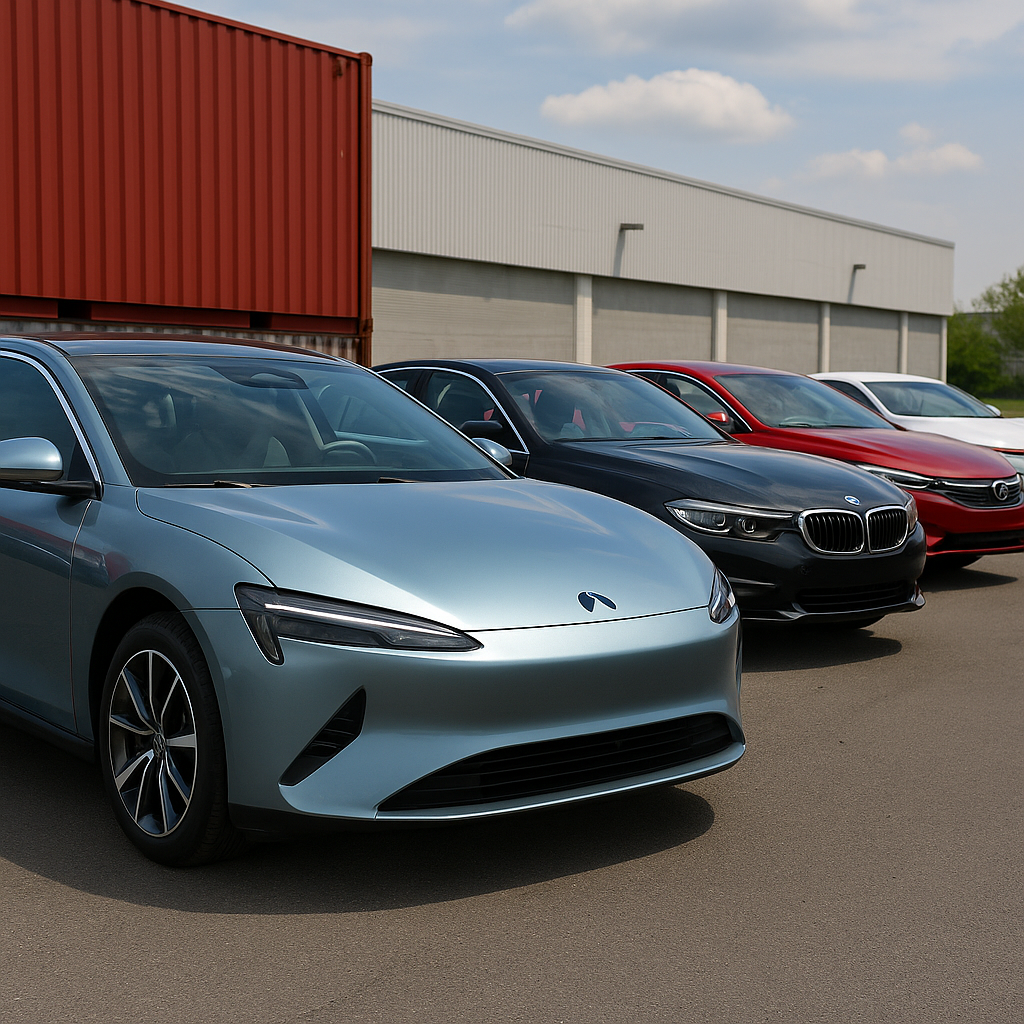Introduction
The Rise of Chinese Automakers: Should Legacy Brands Worry? Ten years ago, few would have predicted that Chinese car manufacturers would be shaking up the global automotive market the way they are today. Back then, names like BYD, Geely, or NIO were either unheard of or associated with cheap, low-quality vehicles. Fast forward to 2025, and Chinese automakers are making waves—not just at home, but across Europe, Southeast Asia, South America, and even in traditionally protected markets like Australia.
The question isn’t whether they’re rising—it’s whether legacy brands like Toyota, Ford, BMW, and Volkswagen should be worried.
Table of Contents
How China Got Here: More Than Just Government Support
Many people attribute the rise of Chinese automakers purely to government subsidies, and while that played a role, it’s an oversimplification. Over the past two decades, the Chinese government did inject billions into its domestic electric vehicle (EV) ecosystem. But just throwing money at a problem doesn’t create global brands.
Chinese companies used this capital to build long-term infrastructure — from battery tech and supply chains to research centers and global design hubs. Today, companies like BYD manufacture their own batteries, source lithium directly from global suppliers, and have strategic partnerships with tech companies.
BYD, in fact, sold more EVs globally in 2023 than Tesla — a milestone that turned heads around the world. And they’re not stopping there. According to Statista, China accounted for over 60% of global EV sales last year, showcasing its dominance.
The New-Age Design and Tech Edge
Gone are the days of outdated designs and plastic-heavy interiors. Modern Chinese cars often look and feel more premium than their western counterparts, at a lower price point. Why?
Because many Chinese automakers have recruited global talent. Former designers from Audi, BMW, and Volvo now work for NIO, XPeng, and other rising brands. The result is a fresh blend of East-meets-West — sleek European-inspired design with advanced Asian technology.
Take the NIO ET7, for instance. It’s not just another electric sedan. It comes with features like:
- A 1000 km range (using semi-solid-state batteries),
- In-car AI assistant called NOMI,
- Swappable battery technology.
That last point is especially crucial. Battery swapping allows drivers to get a fully charged battery in under 5 minutes — something Tesla hasn’t achieved. As TechCrunch reported, NIO already operates thousands of swap stations across China and is expanding into Europe.
Pricing Power: The Silent Disruptor
Price is perhaps the most underrated weapon in China’s arsenal. While Western brands are grappling with rising production costs, labor expenses, and legacy debt, Chinese companies are building cars cheaper and faster.
A BYD Seal or MG4 EV often sells for 20–30% less than a similarly specced Ford or Volkswagen model — with better features. That’s not just competition, it’s disruption.
In early 2024, France and Germany raised concerns about Chinese car “dumping” practices, prompting the EU to consider tariffs. Whether or not tariffs are introduced, the fact that such measures are being discussed at all is a clear signal of Chinese dominance.
Global Expansion Plans Are Real
It’s not just about exporting cars from China anymore. Many Chinese brands are setting up local assembly units abroad. BYD, for example, is building factories in Hungary and Brazil. SAIC (owner of MG) already produces cars in India and Thailand.
The aim? Localize production to beat tariffs and customize offerings to each market. It’s a strategy Toyota and Volkswagen used decades ago to dominate globally — and now the Chinese are doing the same.
Legacy Brands: Still Standing Strong?
Legacy brands still have some undeniable strengths:
- Brand loyalty: People trust names like Toyota and BMW.
- After-sales networks: Years of dealer relationships and service stations.
- Regulatory experience: They know how to navigate safety and emissions laws globally.
But they’re also slow to adapt, often held back by internal bureaucracy and legacy systems. Unlike Chinese automakers who are nimble and tech-driven, many Western OEMs are still catching up on software, connectivity, and EV innovation.
For example, Volkswagen’s software division, Cariad, faced so many delays that it pushed back the launch of several EVs by months. In the same time, BYD released multiple new models.
Should They Worry?
Yes—and no.
Yes, because Chinese automakers are doing things legacy brands can’t or won’t: innovating faster, launching globally, undercutting prices, and redefining EV standards.
No, because legacy automakers still have time. If they rethink strategy, invest more aggressively in software and electrification, and form smart partnerships, they can bounce back.
Consider this: Toyota was once mocked for being late to the EV party. But in 2025, it’s planning a solid-state battery vehicle with 1200 km range. That’s game-changing — if they pull it off.
What’s Next: A Two-Way Battle?
Instead of seeing this as a one-sided takeover, the next decade might witness a two-way battle:
- Chinese brands will continue expanding and improving.
- Legacy brands will be forced to evolve, innovate, and compete seriously.
Consumers are the real winners here. With better cars, lower prices, and more competition, the automotive landscape is set to become more exciting and accessible.
Final Thoughts
The rise of Chinese automakers is more than a trend—it’s a shift in global industrial power. Just like Japan shook up the auto industry in the 1980s and South Korea followed in the 2000s, China is the next frontier.
Legacy brands don’t need to panic—but they do need to wake up. The old playbook won’t work anymore. Innovation, pricing, and speed will define the winners.
Whether you’re a car enthusiast, an investor, or just someone buying a new vehicle—keep your eyes on China. The roads are changing.
You can find more Automobile content:
https://allinsightlab.com/category/automobiles/

